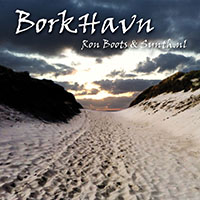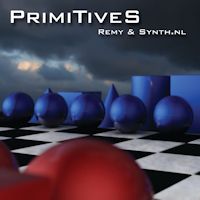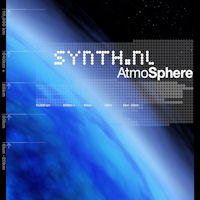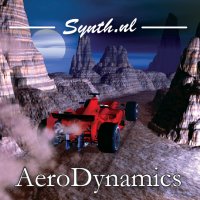
Today I finished another module. It is called the Resonant Lopass Gate and it is a clone of the Buchla 292c. The PCB is designed by Thomas White with permission of Don Buchla. Construction of the PCB is quite straight forward but there are a few jumpers on the PCB you have to set when you want to use the resonance function. Thomas also added the deep switch mod. Another thing you can chose is to use 3 inputs for both CV and audio inputs through a on board mixer, of you can use direct audio and CV in. The two bbig lack components on the PCB are Vactrols. I got them from Bridechamber. They are not very easy to get anywhere else I think.

Here you see the finished module from the back. I didn't install two potmeters on the PCB but directly on the front panel, because I used a Bridechamber pot bracket. I gambled on the orientation of the switch, but got it right in one time. And this time no potmeters the wrong way around either ;) I'm getting quite handy now in wiring modules to the front panel. It is going faster every time. I only had to fidle a bit with the rotary switch. I never used one before with 4 layers and 3 positions. But with a multimeter I found out quite easily what should go where according to the documentation. I had this front panel made by Schaeffer by the way, but saw later that Bridechamber also has it now. Too bad because that would have been a bit cheaper.

After assembling it was time to test and calibrate again. Everything worked right away. I used the good old LFO again to create a gate signal. This thing is really fun. The resonance adds a great edge to the filter and the Vactrol make the edges smoother. You can create very interesting sounds with this modules just by applying a saw to the audio input and a square on the CV input. I'm sure I'm going to use this module a lot in my future audio productions. I used a similar software tool in the past, but this really beats the crap out of that one :)

Here you see the finished module. I think it looks very nice. As said before I had the front panel made by Schaeffer and you can actually download the Front Panel Design (.fpd) file from Thomas White's website. Here you can find the file and more information about the module. You can also order the PCB from here:
http://www.naturalrhythmmusic.com/lopass.html. I can really recommend this one. Thomas White also has some other nice front panel designs on his website that you can download. I'll make some more for sure in the future with his panels. It is great that people share this kind of stuff in the DIY community. As said before if you want any of my panels just let me know. I'd be happy to share them to. Maybe I should put them on my website too in the future.
 The Digital PC Oscilloscope returned from Velleman. And it turned out I was right. They have replaced the AD converter chip. So I didn't make a mistake it turns out and I even detected the right defective component. Well I hooked it up right away and did some tests and everything looks great now. In the picture you can see that I have put it next to the PC Function Generator under the keyboard. Fits quite nicely actually. Now I'm going to play a bit more with this combination and try out the Bode Plot functionality. I'll try to put some results up on my blog when I have them.
The Digital PC Oscilloscope returned from Velleman. And it turned out I was right. They have replaced the AD converter chip. So I didn't make a mistake it turns out and I even detected the right defective component. Well I hooked it up right away and did some tests and everything looks great now. In the picture you can see that I have put it next to the PC Function Generator under the keyboard. Fits quite nicely actually. Now I'm going to play a bit more with this combination and try out the Bode Plot functionality. I'll try to put some results up on my blog when I have them.



























































